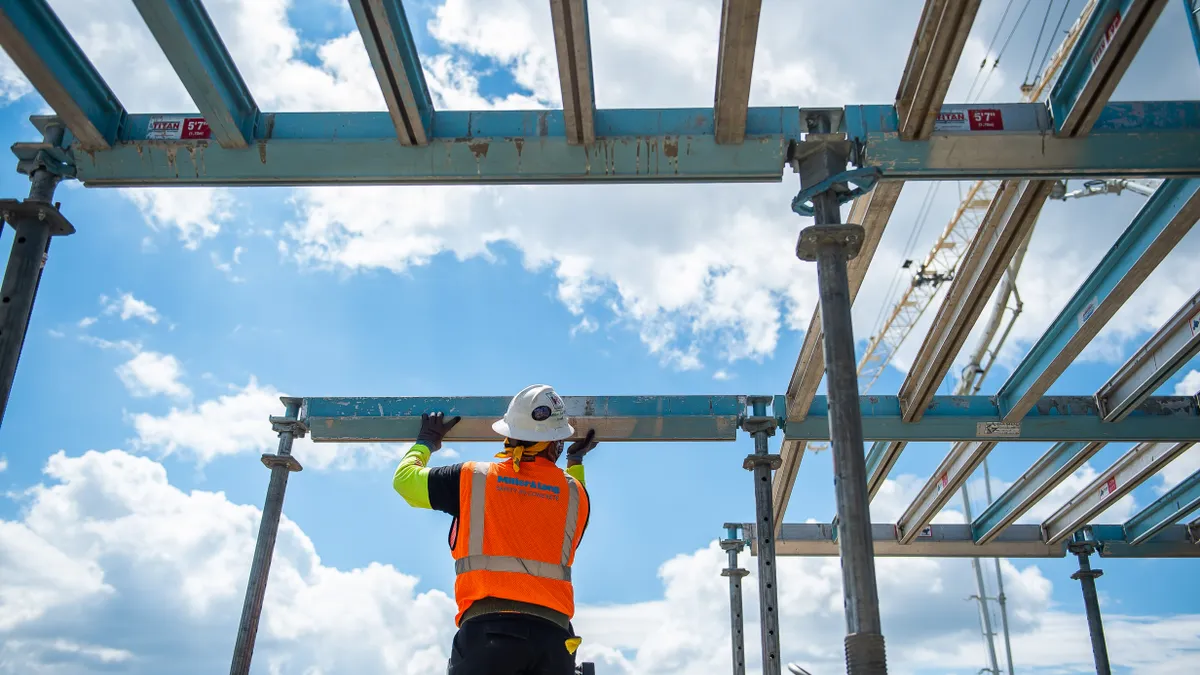Dive Brief:
- The U.S. will probably “narrowly avoid recession,” Goldman Sachs said, predicting a smooth easing in the tight labor market and noting both an unclogging in supply chains and well-moored expectations for long-term inflation.
- Unemployment by late next year will probably rise by a half point and the Federal Reserve’s preferred measure of inflation — the core personal consumption expenditures price index — will probably fall to 3% from 5.1% in September, Goldman Sachs said in a report. The U.S. faces a 35% probability of recession during the next 12 months, Goldman Sachs said, noting that forecasters in a Wall Street Journal survey see 65% odds of a downturn.
- Fed policymakers will probably raise the federal funds rate by a half point at a Dec. 13-14 meeting and by a quarter point in each of its gatherings in February, March and May, Goldman Sachs predicted. The central bank will probably not cut the main interest rate until the second quarter of 2024.
Dive Insight:
Fed policymakers have pledged to press on with the most aggressive withdrawal of stimulus since the 1980s, and achieve a sustained decline in price pressures, even at the risk of setting back businesses and employment.
Inflation is running at the highest level in nearly four decades and has persisted above the Fed’s 2% target since the second quarter of 2021. Fed Chair Jerome Powell said this month that although the central bank may slow the pace of tightening at future meetings, it may eventually increase the benchmark interest rate more than forecast in September.
Price pressures will ease without a significant drop in employment for three reasons, Goldman Sachs said. “First, post-pandemic labor market overheating showed up not in excessive employment but in unprecedented job openings, which are much less painful to unwind.”
“Second, the disinflationary impact of the recent normalization in supply chains and rental housing market still has a long way to go,” Goldman Sachs said. “Third, long-term inflation expectations remain well-anchored.”
U.S. gross national product will likely increase 1.9% this year, 1% next year and 1.6% in 2024, according to Goldman Sachs.
“Growth has slowed to a below-potential pace of about 1% because of a diminishing reopening boost, declining real disposable income (driven by fiscal normalization and high inflation) and aggressive monetary tightening,” Goldman Sachs said.
Goldman Sachs sees a comparatively low probability of recession because of strong but slowing job growth and an initial indication of 2.6% annualized GDP growth during the third quarter. “The incoming activity data are nowhere close to recessionary.”
The prediction by Goldman Sachs appears sunnier than its view as recently as mid-October. Goldman Sachs CEO David Solomon said on Oct. 18 that “there's a reasonable chance of a recession in the U.S., but it's not certain,” according to Reuters. “I could see a scenario with a soft landing.”
Moody’s Analytics also found cause for optimism in recent data, saying its outlook on the economy is “a bit brighter.”
A “surprisingly strong” 1.3% gain in retail sales last month prompted Moody’s to increase its estimate for annualized fourth quarter GDP growth by more than a half point to 2.6%. Consumer spending accounts for nearly 70% of GDP.
“Though gains of this size will be hard to maintain, overall, prospects are for continued sales growth,” according to Moody’s.
“Strong job and income growth, abundant cash and available credit for some and rising prices should overcome the remaining drags from low confidence, a return to service spending and lingering supply constraints,” Moody’s said.












